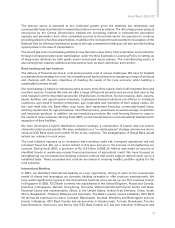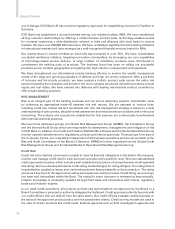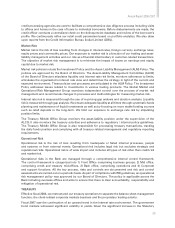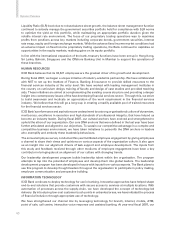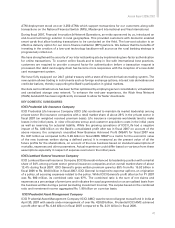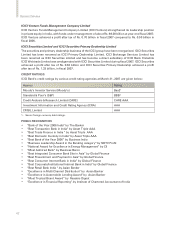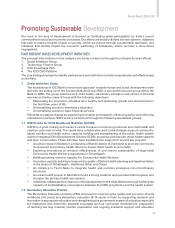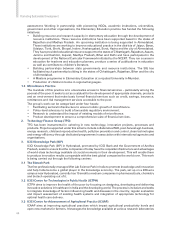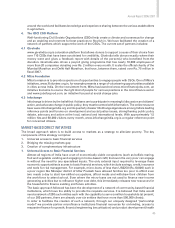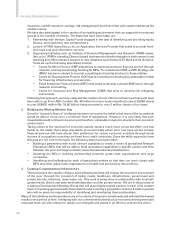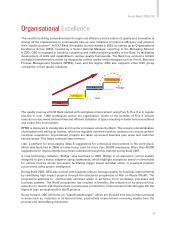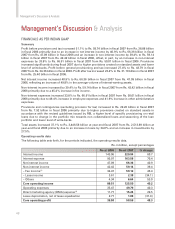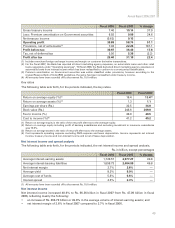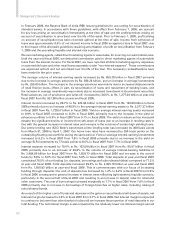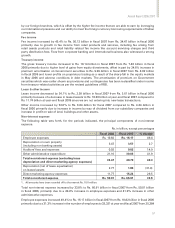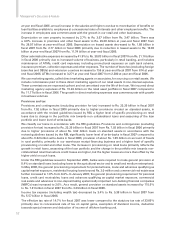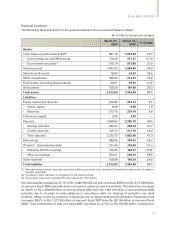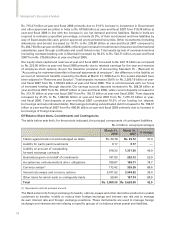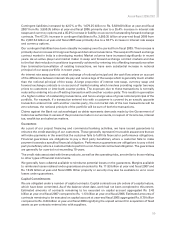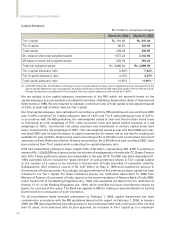ICICI Bank 2007 Annual Report Download - page 48
Download and view the complete annual report
Please find page 48 of the 2007 ICICI Bank annual report below. You can navigate through the pages in the report by either clicking on the pages listed below, or by using the keyword search tool below to find specific information within the annual report.
46
Promoting Sustainable Development
insurance, rainfall insurance, savings, risk management) and direct links with capital markets as the
entities mature.
We have also participated in the creation of an enabling environment that can support the continued
growth in the number of entities. The steps that have been taken are:
1. Partnership with Venture Capital Funds engaged in the task of identifying and providing equity
finance, and mentoring new entrepreneurs.
2. Launch of FINO (www.fino.co.in), an Application Services Provider that seeks to provide front-
end, back-end and information services.
3. Supporting institutes such as Institute of Financial Management and Research (IFMR) (www.
ifmr.ac.in). IFMR is a leading Chennai-based business school with strengths in both research and
teaching and offers research support to new initiatives launched by ICICI Bank and its divisions.
It has set up the following specialized centres:
• Centre for Micro Finance (CMF) that strives to maximise access to financial service through
research, training and strategy building for MFIs. To complement CMF, an MFI Strategy unit
(MSU) has been created to provide consulting and training services to these entities.
• Centre for Development Finance (CDF) that is committed to developing sustainable models
for financing infrastructure and services.
• Small Enterprise Finance Centre (SEFC) that seeks to develop a vibrant SME sector through
research and training.
• Centre for Insurance and Risk Management (CIRM) that aims to develop risk mitigating
instruments.
Following this approach, we have catalyzed the creation of over 210 micro finance partners and have
been able to go from US$1.2 million (Rs. 48 million) in micro-loans extended to about 20,000 clients
to over US$470 million (Rs. 18.80 billion) being provided to over 3 million clients in four years.
2. Bridging the Missing Markets Gap
Once the “access to finance” challenge has been overcome, the belief is that most of the households
would be able to come up to a minimum level of subsistence. However, it is very likely that such
households would continue to be poor and, therefore, vulnerable to systemic shocks to their economic
environment.
Taking clients to the next level of economic activity needs a much more concerted effort; one that
builds on the reality that a large population of economically-active poor now have access to basic
financial services and have shown their preference for certain economic activities through actual
choices of occupations once they are freed from credit constraints. Since the skills required to meet
this goal are not core to the bank, the following steps have been taken:
• Building a partnership with social venture capitalists to create a series of specialized Network
Enterprises (NEs) that will be able to build specialised capabilities in specific sectors and links
between the poor and larger markets (www.thenetworkenterprisesfund.in).
• Assisting the NEs in building partnerships between grass-roots organizations and large
companies.
• Identifying and facilitating the work of specialised entities so that they can work closely with
MFIs and other grass-roots organizations on health and productivity interventions.
3. Creating Complementary Infrastructure
The third step is the creation of larger-scale infrastructure that will change the economic environment
of the poor through the provision of better roads, healthcare infrastructure, government and
private schools, electricity, clean water, etc. This work is being done in collaboration with local self-
governments, district and state level administration and the private sector. We are in the process of
creating a Development Strategy Group that will place highly-trained persons in each of its clusters
(each comprising approximately three districts and covering a population of about 6 million people)
who will be given the responsibility of identifying and developing these partnerships.
Many of the initiatives mentioned above are in the nature of long-term investments and will yield the desired
results over a period of time. In keeping with our commitment towards socio-economic development and
empowerment, we will continue to deploy our strengths and assets in an effort to achieve this vision.



